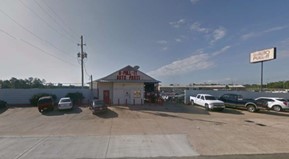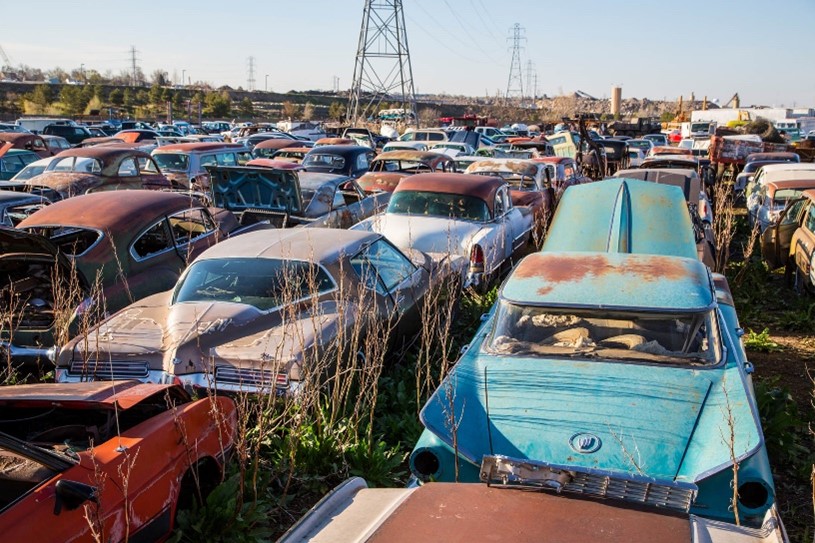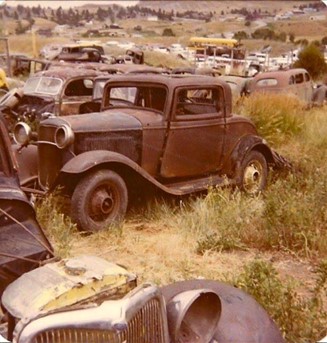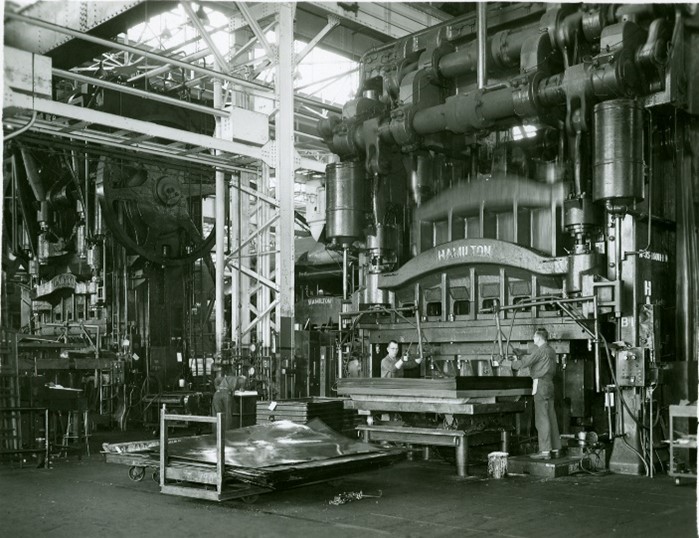There is a litmus test that separates the true gearhead from the posers. If you planned a trip to a junkyard and ask your buddy if he wants to go along to help you look for an inner fender panel for your Ford, and his reply is that he promised his wife that he would help with the flower garden, he is a poser. If, on the other hand, he says, “Wait while I get my tool bag and sombrero. Do you have some extra water bottles?”, then he is a gearhead.
Now let’s clarify the term “junkyard.” There are several types, and it is vital to be able to distinguish the differences. Here are two examples: Pick and Pay and U-PULL-IT. They have later model cars that can be scrounged for the same type of parts that you can get at an auto supply store. You sweat a little, get a little dirty, and can save a ton of money or discover a rare part that is not sold by the aftermarket.

You pay a fee to enter and pay for the part when you exit, similar to a supermarket checkout. English is often the second language of many of the customers. These junkyards are usually well organized and can tell you if they have a 2001 Cadillac in stock and where in the yard it is located. They will also have tote wagons dripping with rancid transmission fluid that you can use to haul the bigger parts. Asking a buddy to help with that type of expedition is almost the equivalent to asking him to help you move to your new apartment. The cultivation needs of his wife’s flower garden is a very rational excuse for not accompanying you.
 The type of junkyard I want to focus on is the increasingly rare junkyard that sits far out in the country and has a field full of cars, many of which were built by companies that no longer exist. These yards are not currently under threat of advancing sub divisions with roof jumper houses spreading like amoebas across the landscape. They are rare treasure islands that those lacking an understanding and appreciation for what these yards offer consider to be environmental waste that should be purged from the countryside. They wait with joyful anticipation for the pancake machine to pay a visit and smash the hulks to two foot slabs that can be hauled off to feed the angry monster hammer jaws that chew them to little bits for loading on to railroad cars for cremation in a blast furnace. Such heartless disregard for human achievement and history of industrial art is to be deplored.
The type of junkyard I want to focus on is the increasingly rare junkyard that sits far out in the country and has a field full of cars, many of which were built by companies that no longer exist. These yards are not currently under threat of advancing sub divisions with roof jumper houses spreading like amoebas across the landscape. They are rare treasure islands that those lacking an understanding and appreciation for what these yards offer consider to be environmental waste that should be purged from the countryside. They wait with joyful anticipation for the pancake machine to pay a visit and smash the hulks to two foot slabs that can be hauled off to feed the angry monster hammer jaws that chew them to little bits for loading on to railroad cars for cremation in a blast furnace. Such heartless disregard for human achievement and history of industrial art is to be deplored.
Once you have successfully (or in vain) searched for the particular parts that you need, there comes a special time that gearheads live for. It is a time to just wander, look, and dream.
“Look over there. That is a 1958 Olds. See all that stainless trim on the rear quarter panel? Can you even imagine something like that today? Is that a Willis over there? Neat little car – I remember when Ross’s Aunt Mildred drove up to the boarding house at Highland Lake in that. Damn is that a 1954 Merc convertible? Played padiddle with my date in the back seat with the top down on a warm evening coming back from a dance (look it up).”
You have to be my age to have those memories, but even young guys get some nostalgic tickle wandering among the relics in a lot full of them. If you are a gearhead, you understand this is a romantic display of cars that serves as a window into past times and old memories. It is not just rusty old junk.
 On very rare occasions, you find a treasure that causes an almost orgasmic response when you see it. What you spot is the rare treasure of a vehicle that you have been searching for years, and suddenly, there it is – a vision in front of you. Can it really be that you could make this yours? How to do it?
On very rare occasions, you find a treasure that causes an almost orgasmic response when you see it. What you spot is the rare treasure of a vehicle that you have been searching for years, and suddenly, there it is – a vision in front of you. Can it really be that you could make this yours? How to do it?
Surely the yard owners knows the value of this find (of course they do). They try to stall your dream with totally unreasonable pricing and inflexible negotiation. Maybe this owner is old and sees what the future holds for his yard, such as the county informed him that he must close the yard and get rid of the junk, or they will do it for him. If you can flash some cash to show that you are a real buyer and not just a fender kicker, you might tempt the yard owner to accept an affordable price. The classical saying that comes into play in this situation: “Money talks and bullshit walks.”
Occasionally what you encounter is the yard owner is a curmudgeon with a masochistic personality that wants to make you suffer.
“How much for the 1932?”
“Not for sale, going to crush it.”
“WHAT! You are going to crush that easily restorable classic car? I will pay you some good money for that car. Why crush it?”
“None of your damn business. If you want to buy something, do it now as I am closing the yard.”
May he spend his after life in hell under the jaws of a 250 ton stamping press.

You see true gearheads have a passion for old cars, even though we know that mechanical death and transformation back to molten steel is their fate. Most are beyond salvation as they have been consumed by tin worms and served too long as raccoon habitats. But, in our minds, we imagine them as they were when we both were younger.
Come with me sometime and share the experience. Don’t worry the mud will eventually rinse off your shoes, but the memories with remain. I fear time is running short for the cars of the 1950s and 1960s. It is now pretty rare to see any pre-war cars, and the ones you see are very sad. The way modern junkyards work is that they leave a car in inventory until it is either picked clean in a few months or fails to get any attention. It is then picked up by a big forklift and sent off to the hammers for final death and destruction. It bothers me to see perfectly good parts just being destroyed. It amplifies in my mind how wasteful we are of our resources.
The junkyard gives us an object lesson regarding what we want overriding what we need. You can visit the wants of the past and reflect on how the desires of today will become the junk of tomorrow.
Such is the magic of the romantic junkyard.
